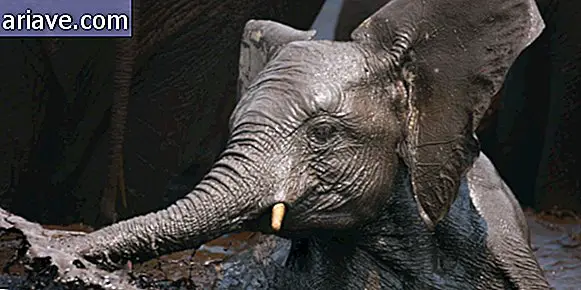The Anatomy of a Roller Coaster [illustration]
“Ték-Ték-Ték-Ték”, you are rising, the voltage increases in the same proportion, gives “that” last check to make sure the protection system is securely fastened, and its axis is normalized again. It is only a few seconds before the fall finally begins, for adrenaline to be discharged into your body and air to be expelled from your lungs - along with screams and laughter (perhaps despair).
You might know we're talking about roller coasters, right? They make the joy of young people and adults around the world, being the most visited toys in the amusement parks. But have you ever wondered how a roller coaster works? What is involved in the process that takes cars to high heights and then allows crazy maneuvers to be performed? Let's check it out.
Chains to the top
For many decades, what makes roller coaster cars - or trains - reach the highest points is a system of very strong metal chains. They are attached to trolleys and connected to engines, which play the role of moving passengers to the tops. This happens in the first climbs and also in others, if the engineers think it is necessary.

The currents start acting before the climbs, as they are responsible for the correct allocation of trains in the boarding and disembarking area. In other parts of the roller coasters there are no propulsion mechanisms, because only the kinetic energy from gravity is used. At the end of the course, brake systems cause cars to lose speed and reconnect with currents.
Currently, a new, more dynamic system is being installed on a series of roller coasters. It is a mode of catapult propulsion, which stores kinetic energy and “pushes” trains at once, unlike currents - which perform a constant process of movement.
Physics applied to reality
You remember when you were in school and you were wondering, “But when are these physics classes going to do anything?” Well, they can explain exactly why roller coasters are so much fun - and it's also based on physical concepts that they are built, because without it would not even be safe to develop a toy of this type.
As soon as it reaches the top and is stationary (relative to the vertical axis), the train is fully endowed with potential energy - which will be replaced in moments by kinetic energy. When unlocked, the same train begins to travel downhill and, thanks to its weight and G-force (gravity), can reach sufficient speeds to perform the maneuvers.

The routes are thought of in a very complex way. The rails need to be aligned in a way that allows for high speed bends and even axis inversions without causing people to come loose from their seats. All of this involves planning highly skilled engineers.
For the loopings there are also very elaborate calculations. The speed at the beginning of it must be sufficient for the cars to reach the first downhill stretch - all the energy stored so far is spent uphill. When descending, it regains kinetic energy and can continue the course.
Safety is key
Roller coasters are built with gigantic metal structures, but that doesn't mean we're talking about a single piece. Thousands of screws, grilles, support parts, and other components help systems become secure. But to make sure that this happens, constant maintenance is of utmost importance.
That way, toys can become safe enough to keep people from being in danger while having fun. In addition, it is also vital that trolleys have passenger restraint equipment, making falls impossible when moving.

For this reason, various types of crashes are used around the world. Slower roller coasters with fewer axle modifications can only use seat belts or locking bars at the passenger belt line.
But “more radical” toys use “U” protectors that stand on their shoulders and lock people in two different ways - vertically and horizontally. The latter is the safest mode of today, and is essential for roller coasters that use looping and other axis inversions in the tracks.
.....
Did you ever imagine that there was physics behind these fun structures? It's a complex job, but it certainly makes the "passengers" have a lot of fun while going uphill, downhill, and mind-bending. Which is your favorite?
Illustrations by: Nick Mancini











